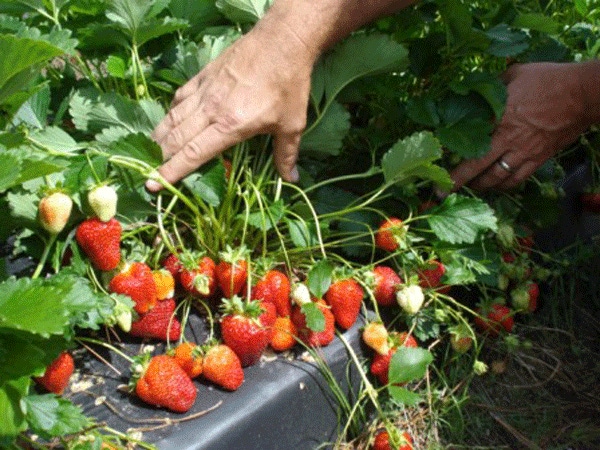March 12, 2012

Strawberry fertilization has begun in the coastal and piedmont regions of North Carolina.
Fruit quality and yield will depend on how well nutrients are managed from now until harvest.
“Plant tissue analysis from the North Carolina Department of Agriculture and Consumer Services provides the most accurate way to monitor strawberry nutrition and adjust fertilizer rates,” said Agriculture Commissioner Steve Troxler.
The department recommends that growers submit strawberry tissue samples every two weeks throughout the bloom and fruiting stages. The test costs $7 per sample for North Carolina growers and $27 for out-of-state growers.
It normally takes two working days for the department’s Agronomic Services Division laboratory to measure nutrient levels in each sample and post test results and recommendations online at www.ncagr.gov/agronomi/uyrplant.htm.
Strawberry tissue samples should contain only most recently mature, trifoliate leaves (MRMLs). These leaves are full-sized and green and consist of one petiole (leaf stalk) with three leaflets. They are usually located three to five leaves back from the growing point. Avoid collecting leaves that are damaged or dull in color.
When MRMLs are being collected, it is very important to detach the petiole from the leaflets immediately. This action halts nutrient transfer between the two plant parts, which will be analyzed separately for different purposes.
Analysis of leaflets can reveal nutrient imbalances within the plant. Analysis of petioles indicates the amount of soil nitrogen currently available for crop growth and development, and serves as a basis for the nitrogen rate recommendation.
Each sample should include MRMLs from 20 to 25 plants randomly selected within a uniform area. For example, all of the plant material in a single sample should be the same variety, growing on the same soil type, planted at the same time and having the same management history. This is known as a representative sample.
To provide accurate recommendations, the Agronomic Services Division asks growers to provide specific information about each crop sample. Details about fertilization history, environmental conditions and the name of the variety being grown should be written on the NCDA&CS “Plant Sample Information” form, which is available on the division’s website.
On the form, it is especially important to indicate the appropriate growth-stage code (B1 through B12) based on the week of bloom.
David Dycus, an NCDA&CS regional agronomist based in Sanford, said it is important that growers have an overall understanding of fertilization strategy to use tissue analysis effectively. Growers who want to initiate a sampling program are encouraged to contact their NCDA&CS regional agronomist for guidance.
Information on collecting and submitting strawberry tissue samples is available online at www.ncagr.gov/agronomi/pictorial.htm.
NCDA&CS regional agronomists can also provide advice on sampling and fertilization. To identify the agronomist for your area, visit www.ncagr.gov/agronomi/rahome.htm, or call Kent Messick at 919-733-2655.
You May Also Like




